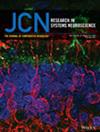Predictive Methods and Probabilistic Mapping of Subcortical Brain Components in Fossil Carnivora
Abstract
Paleoneurology reconstructs the evolutionary history of nervous systems through direct observations from the fossil record and comparative data from extant species. Although this approach can provide direct evidence of phylogenetic links among species, it is constrained by the availability and quality of data that can be gleaned from the fossil record. Here, we sought to translate brain component relationships in a sample of extant Carnivora to make inferences about brain structure in fossil species. Using high resolution magnetic resonance imaging on extant canids and felids and 3D laser scanning on fossil Carnivora, spanning some 40 million years of evolution, we derived measurements for select brain components. From these primary data, predictive equations of cortical (gray matter mass, cortical thickness, and gyrification index) and subcortical structures (caudate nucleus, putamen, and external globus pallidus mass) were used to derive estimates for select fossil Carnivora. We found that regression equations based on both extant and simulation samples provided moderate to high predictability of subcortical masses for fossil Carnivora. We also found that using exploratory probabilistic mapping of subcortical structures in extant Carnivora, a reasonable prediction could be made of the 3D subcortical morphospace of fossil endocasts. These results identify allometric departures and establish adult species ranges in brain component size for fossil species. The integrative approach taken in this study may serve as a model to promote further dialog between neurobiologists working on extant Carnivora models and paleoneurologists describing the nervous system of fossils from this understudied group of mammals.


 求助内容:
求助内容: 应助结果提醒方式:
应助结果提醒方式:


